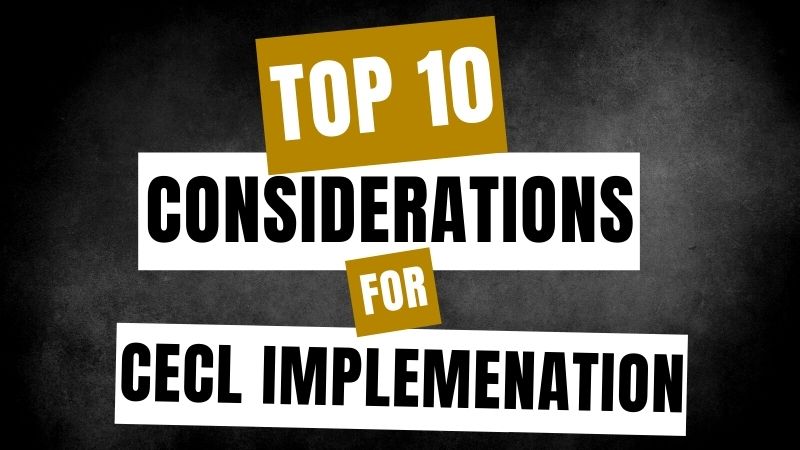10 Practical Considerations for CECL Implementation
10 Practical Considerations for CECL Implementation
The first quarter-end of 2023 means that all institutions will now be reporting a CECL-adjusted allowance in their first quarter call report. Now is a critical time to review your process and procedures to ensure compliance with the new standards as well as industry best practices. Below are our Top 10 practical considerations in developing and refining your CECL model for the real world.
1. Policy
Has a CECL policy been established and approved by the Board of Directors? Your existing ALLL Policy will require significant updates to reflect the new standard as well as relevant regulatory guidance.
2. Data Integrity
Data preparation, archiving, and safekeeping are critical to ensure the integrity of model inputs. The institution should develop a clear protocol for maintaining accurate historical and current data.
3. Process Controls
Key controls such as data reconciliation and output review should be established and documented. If a third-party model is utilized, available SOC reports should be reviewed for possible concerns, including an assessment of the institution’s Complimentary User Entity Controls.
4. Q Factors
Are qualitative (Q) factor adjustments supported by adequate documentation? This includes support for inputs provided by third-party models.
5. Forward-Looking Projections
Projections must be “reasonable and supportable”. Again, third-party assumptions must be supported and documented by the financial institution.
6. Loan Prepayments
In applying the life of loan concept, loan prepayments should be factored into the calculation. In particular, the projected portfolio life for long-term mortgages may have a significant impact on the calculation.
7. Off-Balance Sheet Credit Exposure
Unfunded credit commitments, if not unconditionally cancelable, are included in the scope of the CECL standard, and require a reserve (recorded as a liability) for expected losses. The institution should consider the likelihood of funding as part of the reserve assessment.
8. Held-to-Maturity (HTM) Investments
HTM Investments are also “in-scope” for CECL purposes. Under the standard, certain securities such as government-guaranteed investments (i.e. U.S. Treasuries) may carry an expected credit loss of zero, but all securities should be evaluated for potential lifetime loss.
9. Available-For-Sale (AFS) Investments
While AFS investments do not specifically fall under the CECL standard, guidelines for evaluating and recognizing credit loss were updated with ASC 326-30. An institution needs to consider if AFS unrealized losses are related to credit risk and require an allowance reserve.
10. Model Validation and Back-Testing
In accordance with regulatory guidance and industry best practices, the CECL model should undergo independent validation as well as periodic back-testing. The validation provider should be well-versed in the new technical standard, and ideally, familiar with various models and methodologies to provide a comprehensive, value-added audit.
As a leading service provider to community banks throughout the Atlantic Region, Brown Edwards has provided CECL consulting and audit services to numerous institutions covering a variety of methodologies and models. Our team of specialists can assist with your CECL implementation through validation or targeted consulting of your allowance calculation.

